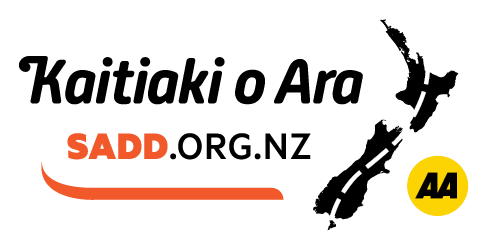
Drive In The Moment
“Break the habit put your phone down while driving”
- The Tool Kit -
Motorists across New Zealand and Australia are extremely concerned about smartphone use in cars. Using a mobile device while driving makes cognitive, physical and visual demands on a driver, and the growing range of functions and use of smartphones has led some to call distracted driving ‘the new drink driving’.
New research shows more than half of drivers are also texting and making calls in moving traffic. A two-year study by the Australian Automobile Association (AAA) has found the majority of road users know the dangers of moving their eyes off the road but are taking the risk anyway. It also found a quarter of drivers had admitted to using social media behind the wheel and more than 10 per cent while their car was moving.
Official crash data shows driver distraction contributed to 16 deaths on New Zealand roads, 136 serious injuries and 1,079 minor injuries last year (CAS, 2019), but international research indicates that it is likely to be a factor in many more crashes than reported (Gordon, 2009).
The Drive in the Moment toolkit has been rolled out across Australia through the AAA. The toolkit is being launched in New Zealand as a partnership between the New Zealand Automobile Association (NZAA) and its affiliate Students Against Dangerous Driving (SADD).
Drive in the Moment is a road safety initiative. It has been designed to help drivers reduce their smartphone use behind the wheel. It is a research based, evidence driven intervention that models its approach on principles designed to break harmful habits like smoking or gambling.
The tool is designed to help drivers break their habit for good. It takes drivers on an online journey to understand the dangers, rate the risks, and make a mental plan to change their response the next time they are tempted to use their phone while driving. Users who build a plan on the Drive in the Moment website are then placed on an email pathway designed to help manage relapses by helping them remember the plan they made.
For example, a simple one step plan might look like: “When I’m [stopped at the lights] and I’m tempted to [reach for my phone to check social media], I will instead remember to [keep my hands on the wheel] and [consider I may lose my job if I get fined].” Experience from a very recent and related study in the UK shows this approach works well for up to three temptation moments. In addition to a wide range of preloaded temptations and response moments, users also have the ability to create custom options. Practising this mental plan, while driving or even just at home, will help to amplify its effects over time as the brain lays down new neural pathways.
Have a go at building a plan to help reduce your distractions while driving, encourage your friends and family to understand the risks of distracted driving and make your plan to change habits to stop distracted driving.
- National Leader’s Thoughts -
“This tool helps you to acknowledge and think about your own driving habits and make a plan to change. Distracted driving is on the rise due to more leaps in technology. This app could really help to shift mindsets.”
— Ashleigh Putt Fallows.
“The plan builder really helps to build commitment and set the mindset for change. It encourages ownership and helps to bring the message home. ”
— Issy Kennedy
“ This tool helps those who want to make a change but might not have known where to start.”
— Anish Kadariya
- Step Through The Site -
Why is Distraction Dangerous
Understanding the Risks helps you learn more about the risks associated with distracted driving and allows you to interact with the tools on the pages to see how turning on/off features on your phone can help reduce distractions while driving
The Risk Rater
Is new way of engaging users by demonstrating the risk of smartphone distracted driving against well-established risky behaviours. It does this through an interactive quiz prompting users to rank the relative risk of various driving behaviours against the opinions of road safety experts to help them understand the crash risk. Our demonstration of these various risks together is, we believe, the first of its kind.
The Plan Builder tool
The tool prompts young drivers to build a personalised plan to reduce their smartphone use by helping to identify the various ways and moments in which they are tempted to use their phone while driving, including in stop-start traffic or when stopped at lights. It then asks them to develop a ‘mental plan’ of how they will better respond, manage relapses and re-enforce positive behaviour.
The Research and Key Findings
(1) Young New Zealand Drivers –
Addendum 2 to Final Report for Fédération Internationale de l'Automobile (FIA), from the Australian Automobile Association (AAA) Distracted Driving project
(2) Drive In The Moment
A summary of the AAA Distracted Driving project
(3) Presentation of research results
Distracted Driving - A research driven intervention
Dr. Kate O’Donnell, AAA Research Manager
Mr Tim McLaren, AAA Campaign Director
Go Phone Free 2020 With
National Leaders
In 2020 we couldn’t run our annual ‘Go Phone Free’ campaign in Term 2 as planned (thanks COVID!) so instead we are promoting ways to get behind the cause of Distracted Driving in other ways! With Road Safety week coming up in October it is a perfect time to spread messages about the issue of distracted driving and to promote alternatives to using your phone while your eyes should be focused on the road. Perhaps you could run a distracted driving activity during road safety week and use this tool to help break the habit.







